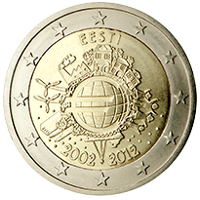 |
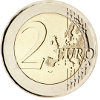 |
C o m m e m o r a t i v e
C o i n s |
||
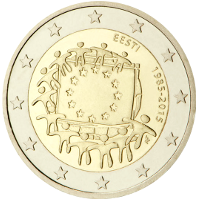 🔎
🔎 |
 |
Estonia | 10 Dec. 2015 | 30th anniversary of the EU‐Flag |
20001 20002 20005 |
350,000 |  |
National characteristics : Above is the name of the issuing country "EESTI" (Estonia), followed by the dates "1985‐2015". The coin was minted without mint marks by the Lithuanian mint Lietuvos monetų kalykla in Vilnius. |
|||||||
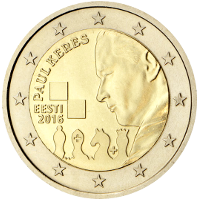 🔎
🔎 |
 |
Estonia | 07 Jan. 2016 | 100th birthday of chess grandmaster Paul Keres |
20001 20002 20005 |
500,000 |  |
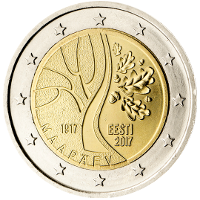 🔎
🔎 |
 |
Estonia | 26 Jun. 2017 | Estonia's road to independence |
20001 20002 20005 |
1,500,000 |  |
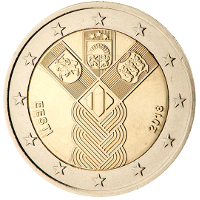 🔎
🔎 |
 |
Estonia | 31 Jan. 2018 | Establishment of the states of Estonia and Latvia, Re‐establishment of the state of Lithuania Common Issue of the three Baltic States |
20001 20002 20005 |
500,000 |  |
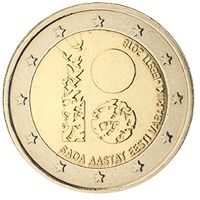 🔎
🔎 |
 |
Estonia | 19 Feb. 2018 | 100 years Independence |
20001 20002 20005 |
1,317,800 |  |
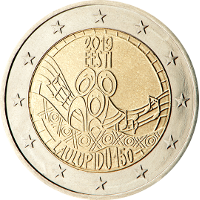 🔎
🔎 |
 |
Estonia | 29 May 2019 | 150th anniversary of the first Estonian Song Festival |
20001 20002 20005 |
1,000,000 |  |
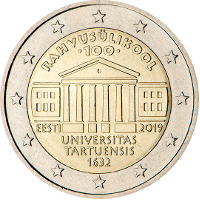 🔎
🔎 |
 |
Estonia | 19 Nov. 2019 | 100 year anniversary of the founding of the Estonian language University Tartu |
20001 20002 20005 |
1,000,000 |  |
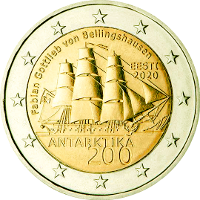 🔎
🔎 |
 |
Estonia | 27 Jan. 2020 | 200th anniversary of the discovery of the Antarctic |
20001 20002 20005 |
750,000 |  |
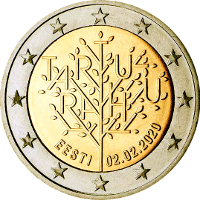 🔎
🔎 |
 |
Estonia | 01 Feb. 2020 | 100th anniversary of the Treaty of Tartu |
20001 20002 20005 |
1,000,000 |  |
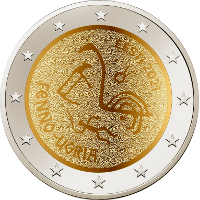 🔎
🔎 |
 |
Estonia | 16 Jun. 2021 | Finno‐Ugric peoples |
20002 20007 20008 |
1,000,000 |  |
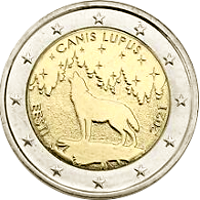 🔎
🔎 |
 |
Estonia | 20 Oct. 2021 | Celebrating the Wolf as the Estonian national animal 1st coin of the national symbols of Estonia series |
20002 20007 20008 |
1,000,000 |  |
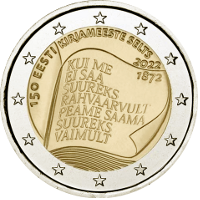 🔎
🔎 |
 |
Estonia | 09 Mar. 2022 | 150th anniversary of the Society of Estonian Literati |
20003 20005 |
1,000,000 |  |
 Work in progress |
|||||||
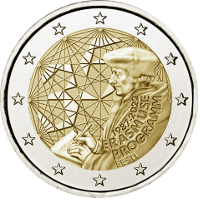 🔎
🔎 |
 |
Estonia | 01 Jul. 2022 | 35th anniversary of the Erasmus Program |
20003 20005 20009 |
1,000,000 |  |
National characteristics : The quarter circle at the bottom right has four lines; below the commemorative period, the issue occasion "ERASMUSE PROGRAMME" (Erasmus Programme in Estonian) is written in two lines, below which is the issuing country "EESTI" (Estonia). The coin was produced by the Lithuanian mint Lietuvos monetų kalykla in Vilnius. The coin belongs to those with the more structured background. |
|||||||
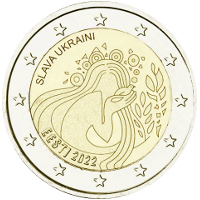 🔎
🔎 |
 |
Estonia | 08 Jul. 2022 | Slava Ukraini |
20003 20005 |
2,040,000 |  |
 Work in progress |
|||||||
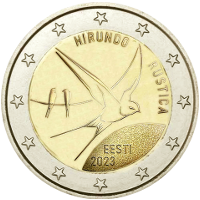 🔎
🔎 |
 |
Estonia | 12 May 2023 | The Barn Swallow, Estonia's National Bird 2nd coin of the national symbols of Estonia series |
20003 20005 20009 |
1,000,000 |  |
| References : | |||
| 20001 | Images taken with authorisation by the ECB ‐ Mail dated 20.Feb.2020 © "European Central Bank" |
20002 | Data mirrored from Wikipedia Page "2_euro_commemorative_coins" with friendly support of the guardians of that page. |
| 20003 | Images taken with authorisation by H....... Hamburg | 20004 | Coloured version of this Commemorative Coin in circulation EU‐legal‐technical specifications do not recongnise colour prints. The EU nevertheless tolerates them, as their numbers are very small and they are sold in special packs and therefor are very unlikely to be used as currency. |
| 20005 | enlarged Images taken with authorisation by Gerd Seyffert © "Gerd Seyffert 2021" |
20006 | Not Applicable |
| 20007 | Images taken by Münzen Kreuzberg © "Münzen Kreuzberg 2021" |
20008 | enlarged Images taken by Münzen Kreuzberg © "Münzen Kreuzberg 2021" |
| 20009 | Text with kind permission by Gerd Seyffert © "Gerd Seyffert 2023" |
20010 | Not Applicable |
 |

